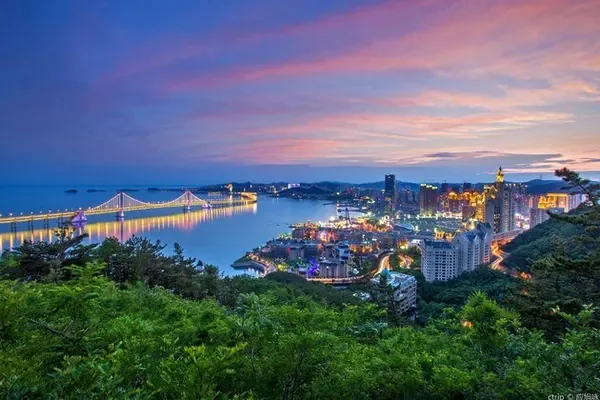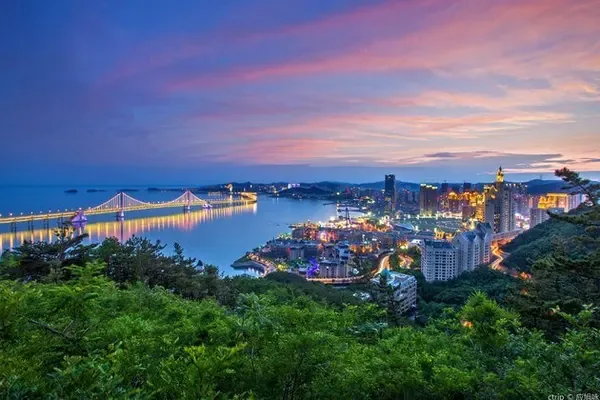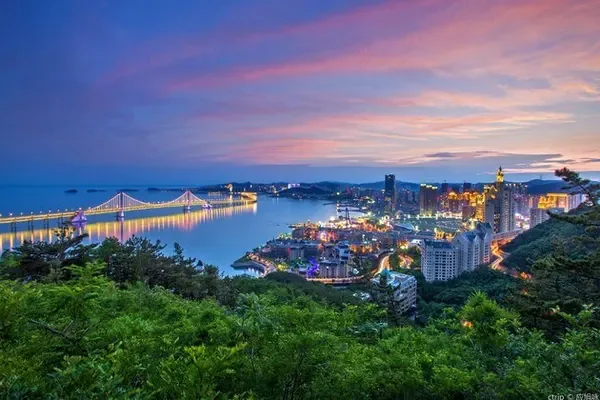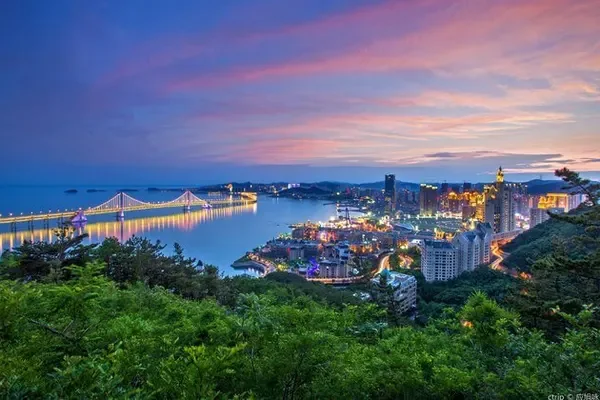"Devil City" in Wuerhe
It was almost 11 o'clock when we returned to Burqin, and it was already dark, so we went to the night market again to eat grilled fish. The next day at 8:00 a.m., the long-distance trek started again, and the destination was "Jinghe" county, the hometown of "Gouqi" in Xinjiang. Soon after the car got on National Highway 217, it entered the Zhungeerxi Gobi Desert. The monotonous desert scenery made everyone in the car close their eyes and relax.


At about 11:30, we arrived at the "Devil City" in Wuerhe, which has been admired for a long time. Uerhe Devil City is also called Uerhe Wind City. Located in the Wuerhe Mining Area in the lower reaches of the Jiamu River on the northwest edge of the Junggar Basin, 100 kilometers southwest of Karamay City, the 217 National Highway passes nearby. Devil City is northwest-east, with a length and width of about 5 kilometers. From April to August every year, strong winds of magnitude seven or eight are often blown here, and the maximum wind force can reach magnitude 10-12. The strong wind whirled and howled in the Windy City, making a shrill and strange cry, like ghosts crying and wolves howling, which was creepy. This situation makes Fengcheng a "horror world", so the local Mongolians call this city "Sulumhak", and the Kazakhs call it "Shaytankersi", which means the devil city. Devil City is a combination of various wind-eroded landforms formed by the Cretaceous horizontal sand and mudstone in ocher red and gray green, which were eroded by flowing water, wind-driven grinding and carving.
We got off the car at the gate, took a few photos and entered the Devil City with the group. Our car enters from another entrance, and then we all get on the car and take a tour by car.


At noon, the sun in Devil City is strong, the wind is also strong and dusty, but there is no howling of ghosts and wolves in the introduction. The car was bumping on the rough dirt road in the city. Everyone watched the combination of various landforms with their own imagination. In my eyes, those stone walls, stalagmites, stone beasts, stone men, stone birds, stone fish, and stone turtles , Stone lanes, stone castles, stone palaces, stone pavilions, stone mushrooms, etc. are all so-so. What impressed me was some large groups, some like "Tiananmen", some like "Potala Palace", and some like "Aircraft carrier" and so on. The car stopped in a wider place and let us move freely.













Everyone got out of the car, but after a while most of them got back into the car because it was hot and sandy outside. In addition to the combination of imaginable landforms all around here, there are local hawkers selling various tourist souvenirs; there are also camels holding national costumes waiting for you to take pictures; there is also a table with a knife , guns and other ancient weapons, and the sign in front of the table says the filming scene of the movie "Dragon Ba Bu". I haven't seen the movie, so I don't have a deep impression. Besides, there are no traces left by the movie except the barren hills.
I still walk around, look, pat. It's almost time, return to the car to continue browsing, and use the camera to take pictures of the wind-eroded scenery.









The car left Devil City and drove onto National Highway 217. It was a pity that I passed the famous Devil City in such a hurry just now, without feeling a little fear, and didn't hear a ghost cry or a wolf howl. I think that if I come again in the future, I will spend a night here and feel the feeling only in the horror blockbuster.
Karamay Oil Production Area, Jinghe County
There are more and more kowtow machines for oil production on the Gobi outside the car window, and we entered the oil production area of Karamay Baili Oilfield. Karamay is a municipality directly under the Central Government of the Xinjiang Uygur Autonomous Region. It is located on the northwestern edge of the Junggar Basin, next to Gayer Mountain in the northwest, north of the Tianshan Mountains in the south, and north of the Gurbantunggut Desert in the east, with an average altitude of 250-500 meters. "Karamay" means "black oil" in Uighur, and it is named after a natural asphalt hill near the urban area - Black Oil Mountain.
Xinjiang Petroleum began drilling as far back as 1897 (the 23rd year of Guangxu); in 1909, a 20-meter shallow well was drilled, with very little output. After the founding of New China, a youth drilling team composed of 8 ethnic groups came to the Karamay Gobi desert where "there is no grass, no water, and even birds do not fly". Well No. 1 was drilled on October 29, and industrial oil flow was obtained. Since then, the country has carried out large-scale crude oil exploration, development, processing and transportation here. On May 29, 1958, Karamay City was formally established with the approval of the State Council. Now Karamay has become a modern oil complex and a new oil industry city.
We passed by Karamay City and failed to see this new oil industry city from zero to modernization because the travel agency did not have this project on its schedule. In fact, Xinjiang's tourism projects are not only eye-catching for its original natural scenery, but also for new cities such as Shihezi City and Karamay City, which are condensed with the hard work of Corps soldiers and the sweat of Xinjiang minority compatriots.
Our car passed through Kuitun City and turned onto National Highway 312. At around 9:00 p.m., we arrived at the county seat of "Jinghe". Jinghe County is located in the northwest of the Xinjiang Uygur Autonomous Region, at the northern foot of the Porokonu Mountain, a branch of the Tianshan Mountains, and on the southwestern edge of the Junggar Basin. In 1998, "Jinghe" County, which was appraised by the Ministry of Agriculture of China as the "Hometown of Goji Berry in China", is famous both at home and abroad for its excellent quality, intensive processing and high yield. Now it has become an important distribution center of dried wolfberry fruit in the country and a "barometer" reflecting market fluctuations in wolfberry prices.

We were passing by in a hurry, and after arranging accommodation, we went to the street to eat and shop. The county town of "Jinghe" is very small, and a county road directly leading to National Highway 312 in front of our hotel is under construction, and the dust is flying when the car drives past. There is a street (or road) about 100 meters east along this road, which is the cultural and economic center of the county. The colors of the buildings on both sides of the street are exaggerated. Most of them are restaurants and restaurants, as well as department stores, souvenir stores, medicine stores, Internet cafes, and dance halls.
We found a restaurant to sit down and want to order a few dishes, and found that the dishes here are very large. For the 4 of us who eat very small, 1-2 pots are enough, for example, "big plate chicken" 80 yuan / a Basin (as big as our general washbasin). We try to negotiate with the shop owner whether the quantity is smaller and the price is cheaper. At first, the shop owner thought it was unbelievable and at a loss, because we asked for 1/4 of each pot, they replied that they couldn't do it. In the end, the result of the negotiation is half, and the price is half. I ordered a few dishes, ordered a bottle of beer and a glass of "Cavas" drink, it was very rich and full for a few days, but in the end there was still a lot left, what a pity!
After dinner, it was already dark, but the shop was still bustling with tourists, all of whom were buying goji berries and other local specialties, and we were no exception. The karaoke concert at the entrance of the department store has been going on for a long time, and the noise and piercing singing are intertwined, so that we dare not neglect it and leave with a glance. This is also a kind of amateur entertainment for local people that we can see.



